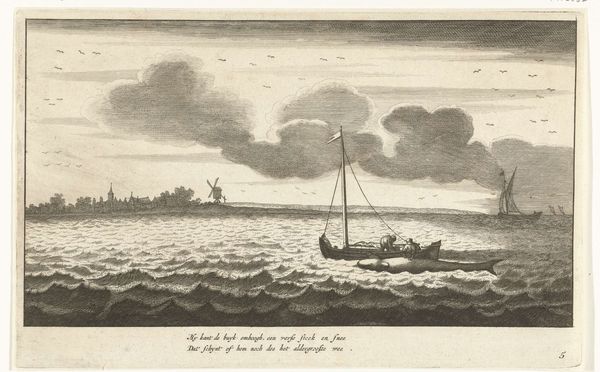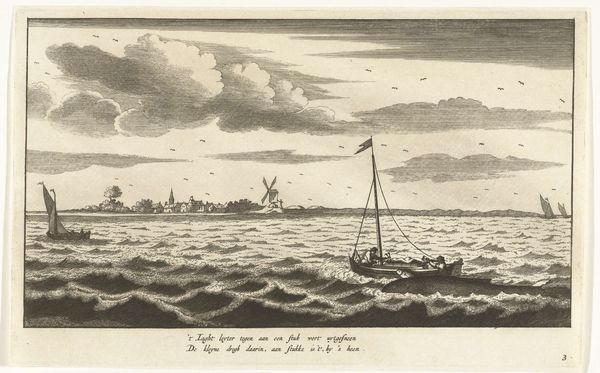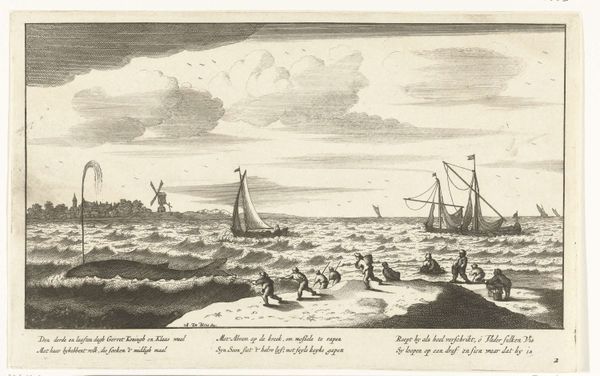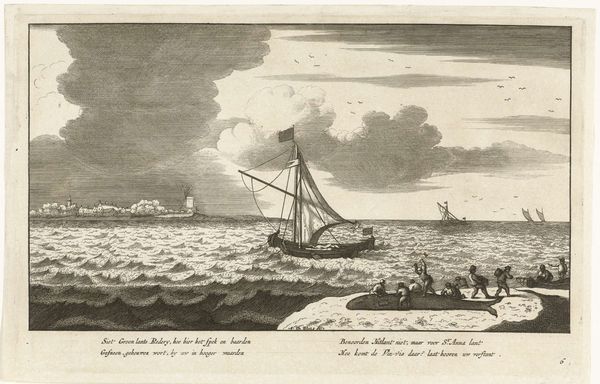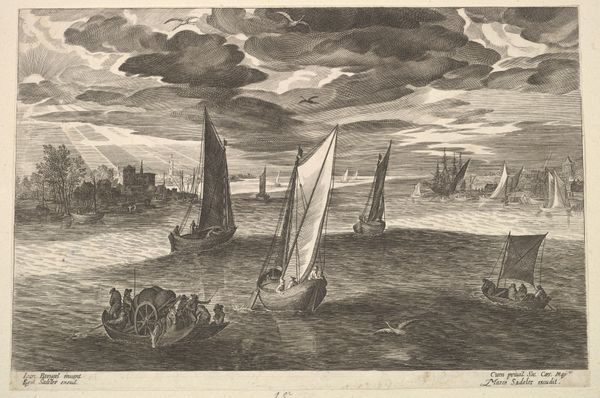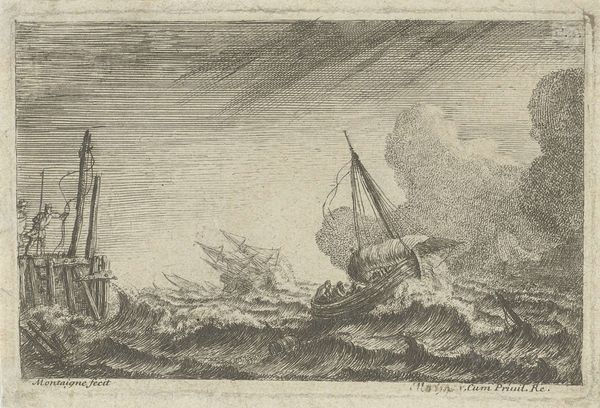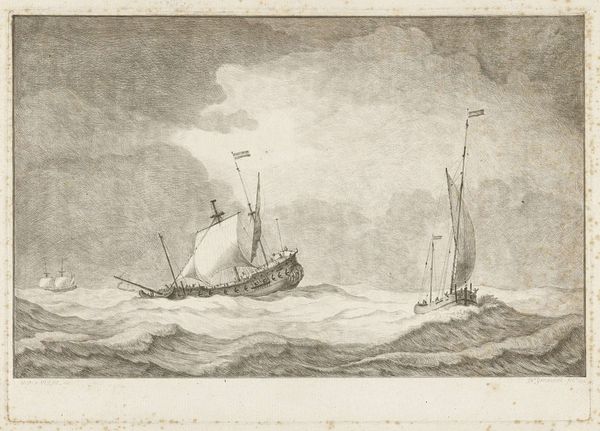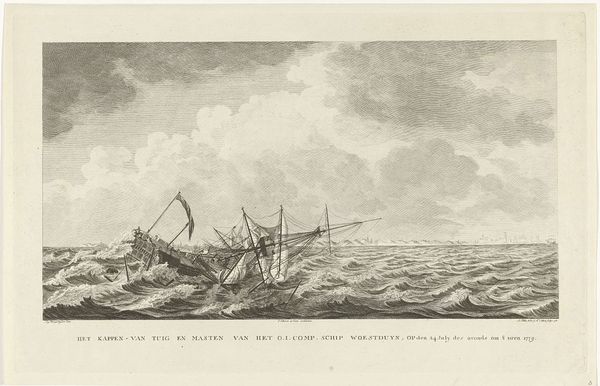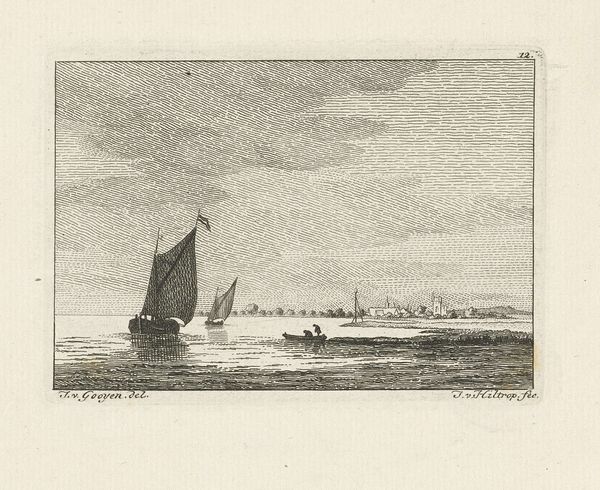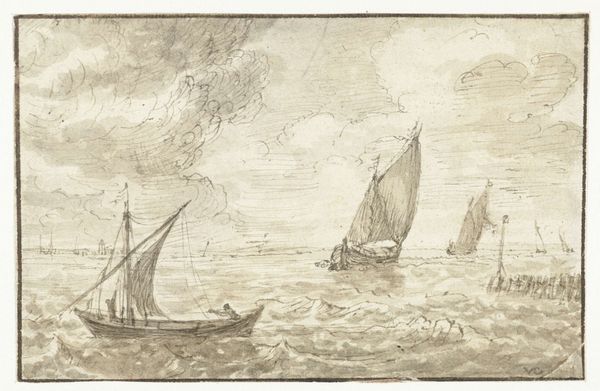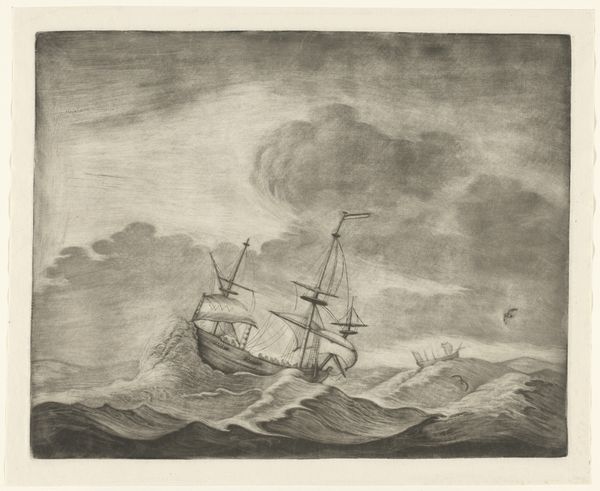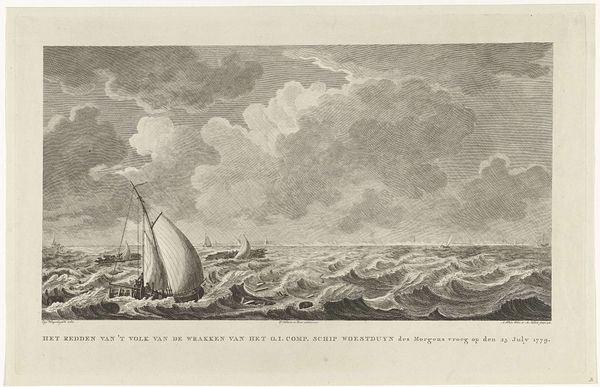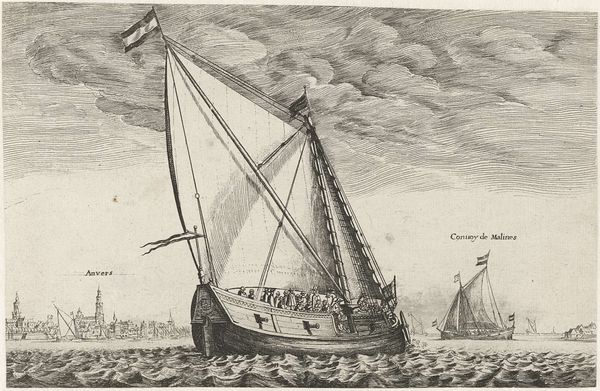
print, etching
#
narrative-art
#
dutch-golden-age
# print
#
etching
#
old engraving style
#
landscape
#
history-painting
Dimensions: height 190 mm, width 298 mm
Copyright: Rijks Museum: Open Domain
Editor: Here we have "De walvis aan een lijn, 1682," or "The whale on a line, 1682" by Abraham de Blois. It’s an etching held at the Rijksmuseum. The stark contrast and choppy water create quite a dramatic scene, almost like a tense standoff between man and nature. What strikes you about it? Curator: The work excels through its formal oppositions. Consider the relationship between the whale and the boat: One reads as a dark, horizontal mass, almost still despite being in water. The other is smaller, angled, with the activity of the two figures creating complex linear activity. It gives us visual dynamism within a fairly constrained palette. Do you notice how the cloudscape echoes the patterns of the waves, thereby establishing an aesthetic and symbolic parallel between the marine environment and the sky? Editor: That's fascinating! I hadn’t considered the formal link between the water and the sky. So, you're saying it’s the interplay of shapes, lines, and textures, rather than any historical narrative, that creates the work’s impact? Curator: Precisely. It’s in how the artist articulates the relationships within the frame itself, with a keen eye for balances of darkness and light. For example, observe how the whale's dark form anchors the lower portion of the etching, preventing it from being visually dominated by the intricate textures of the waves and sky. This shows mastery of formal arrangement. How do these formal features reflect or contribute to the cultural values during Dutch Golden age? Editor: I see! I’m now viewing it through the artist’s manipulation of form rather than my own emotional response. Thank you. Curator: Indeed. And, now that you grasp these formal complexities, can you discern similar relationships within other works?
Comments
No comments
Be the first to comment and join the conversation on the ultimate creative platform.
